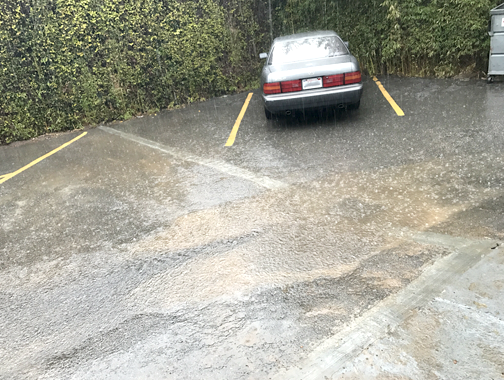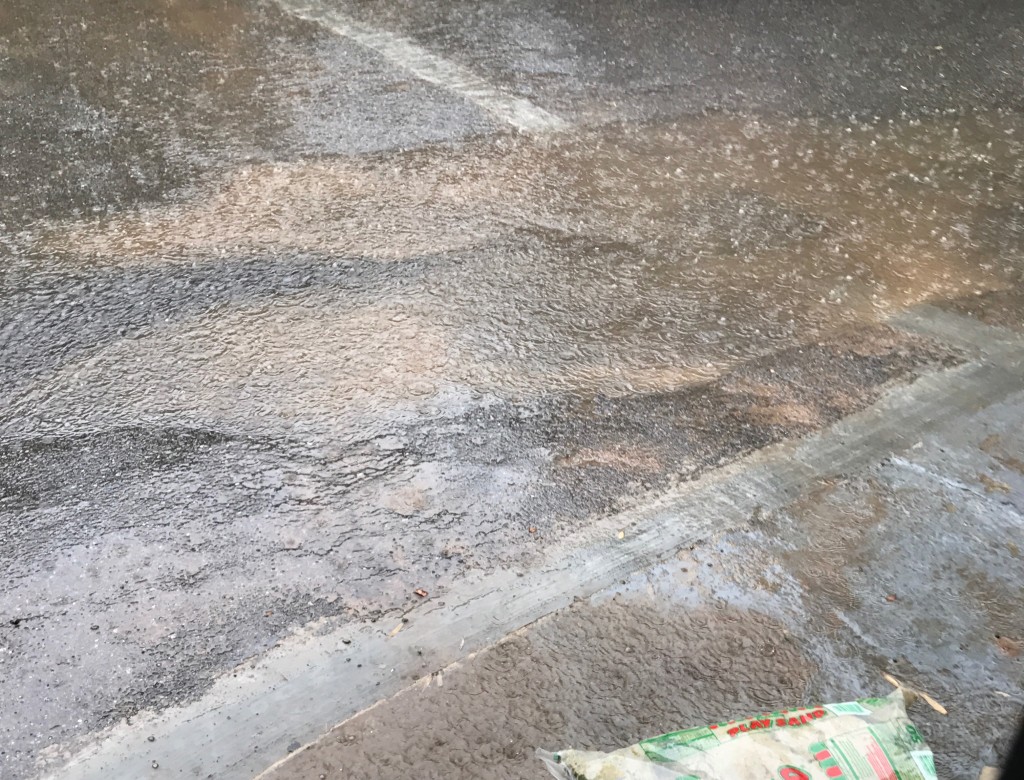
Heavy rain in the foothills made it difficult for people to make their way across common areas. The rainy season isn’t over yet.
By Charly SHELTON
With the recent series of storms to hit the California coast in the last few weeks, news sources across the country are declaring the drought over, or nearly so. Figures are being thrown out from its being 40% over to 80% over and everywhere in between. The most common statistic is that 42.5% of the state has been pulled out of the drought, according to the U.S. Drought Monitor at Drought.gov.
“The Drought Monitor doesn’t tell you the full story,” said Bill Patzert, climatologist and oceanographer at Jet Propulsion Laboratory. “[It is] a bad gauge of drought in Southern California because it doesn’t tell you anything about the groundwater, how much imported water you’ll get, and it doesn’t tell you that 90% of that rainfall ended up in the Pacific. It might be good in the Midwest, but it’s not a good gauge for California. Take The Drought Monitor with a huge grain of salt.”
What we do know is that last year’s El Niño, which hit Northern California, Oregon and Washington with such force, avoided Southern California due to a high pressure system that diverted most of the rainstorms. After all the preparations and sandbagging of homes, the rain never arrived in the foothill communities.
“The El Niño was real, it was immense, but the impacts were disappointing for Southern California. Now what we often expect after an El Niño is a La Niña, where the equatorial waters get very cool, but it didn’t show. So what we got was more of a La ‘Nada,’” Patzert said. “[We never got our] one big signal in the Pacific that controls the jet stream paths and the precipitation patterns. That kind of opened the door for everything – cool storms from the North Pacific and these atmospheric river events out of the sub-tropics. That’s essentially what we’ve gotten here in the last few months.”
Record rainfall across Southern California has nearly doubled the annual rainfall received to date. The National Weather Service Los Angeles issued a tweet on Sunday stating, “Downtown Los Angeles has received 13.52 [inches] of rain since Oct. 1, 2016, which is 216% of the normal rainfall to date of 6.26 [inches].” The rainfall measurement station at Rosemont Middle School reads that the Crescenta Valley specifically received 5.34 inches of rain this month alone as of Jan. 25.
“I can tell you that I’m flooded with euphoria for all the rain,” Patzert said.
But we are not nearly out of the drought yet. As Patzert said, 90% of the rainfall flows off into the Pacific Ocean. The LA River is 51 miles of concrete connected to 6,000 miles of storm sewers, and their only job is to move surface water out of neighborhoods and into the ocean. So even though 5.34 inches of rain fell so far this month, only about 0.5 inches was caught to percolate down into the groundwater basin – a process that takes many months.
“It took us many, many years to deplete the groundwater basins here in the San Gabriel Valley and there’s no quick fix,” Patzert said. “The other thing is our other two sources of water, which are imported water from Northern California and the Colorado River. Lake Mead is at record low levels and it will take decades to refill it. Not years, but
decades. And at this point, it’s not clear how much water the State Resources Board will allocate for Southern California this summer and into the fall. At this point, we’re importing 70% of our water, so who cares how much it rains here because it will take months, years to fill up the groundwater basins.”
This is just the way things are in LA, and to change it would require too much land. Entire neighborhoods would need to be razed to build groundwater catchment basins, Patzert said, and it is just not feasible. So even though we have had quite a bit of rain so far and are looking forward to the rainy months of February and March ahead, we can’t declare victory over the drought just yet.
“We are a long way from busting this drought,” Patzert said.

